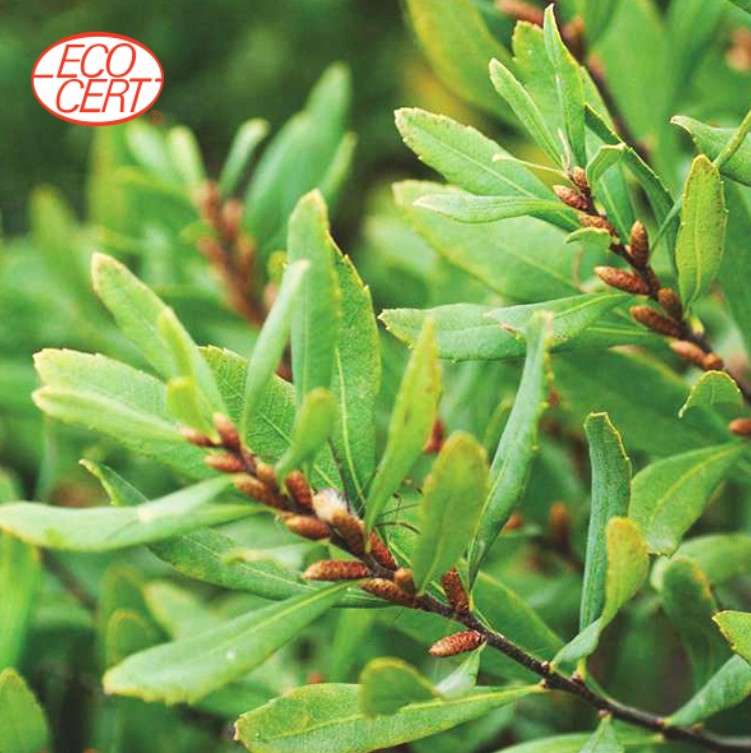Product Description
Latin Name: Myrica gale
French Name: Myrique Baumier
English Name: Sweet Gale
Botanical Family Name: Myricaceae
Origin: Quebec, Canada
Harvest time: July and August
Distilled Parts: Twigs and leaves
Organoleptic Characteristics: Fresh and slightly peppery, light yellow to greenish liquid
Components: Myrcene, Germacrone, Limonene, α-Phellandrene, α-Pinene, Selin-11-en-4-α-ol
ORIGIN
Sweetgale is a small shrub that usually measures between one and two meters in height. It is found in the northern territories of Canada. In North America, it stretches between the Arctic Circle to the west and Ungava Bay to the east. It takes root along waterways and lakes, this helps in the stabilization of river banks. Sweetgale is thus found in moist and acidic soil.
The leaves of the plant grow in a spiral pattern along the branch and measure between 2 and 5 cm in length. From their base, the leaves widen until they form jagged teeth at the end. Droplets of resin cover the leaves and are at the origin of the plant’s second name in French: « bois-sent-bon » which means, «good smelling wood».
Like hops, Sweetgale is a dioecious plant, meaning it has male and female plants. Its flowers, also called kittens, do not have petals. The male flowers or kittens are recognizable because they are larger in size than the female kittens.
Flowering takes place before the appearance of new leaves in the spring. The fruit is used in particular as a spice once crushed and has a bract that supports its flowering in the aquatic environments that it borders.
HISTORY
Sweetgale has forged a place for itself in Amerindian communities and its use varies according to the community that is using it.
The Potawatomi used it particularly in the preservation of the wild berries they pick, covering their buckets with the plant.
The Ojibwa people used it as a dye. The seeds are a golden yellow color and are boiled to obtain a dye of the same color. They used this to dye wool, or as an infusion or decoction for its diuretic and stomachic properties.
First Nations also used it in fumigation to ward off mosquitoes, but also for its ability to promote lucid dreams.
Recommendation: Essential oils and hydrosols are wonderful for the well-being of humans, animals, insects and plants. There are many books on the subject of aromatherapy and they should be referred to for the proper and safe use of essential oils and hydrosols. We also recommend that you consult an aromatherapy professional, who will be able to target the aromatic molecules of essential oils or hydrosols and their biochemical groupings, thereby increasing the effectiveness of your care.
The information provided on this website does NOT in any way constitute a recommendation for the care or treatment of any particular medical condition or disease.
We do not add any preservatives to our hydrosols, so they should be stored in a cool, dry place, away from light and air, in order to keep them for 1 to 3 years.
